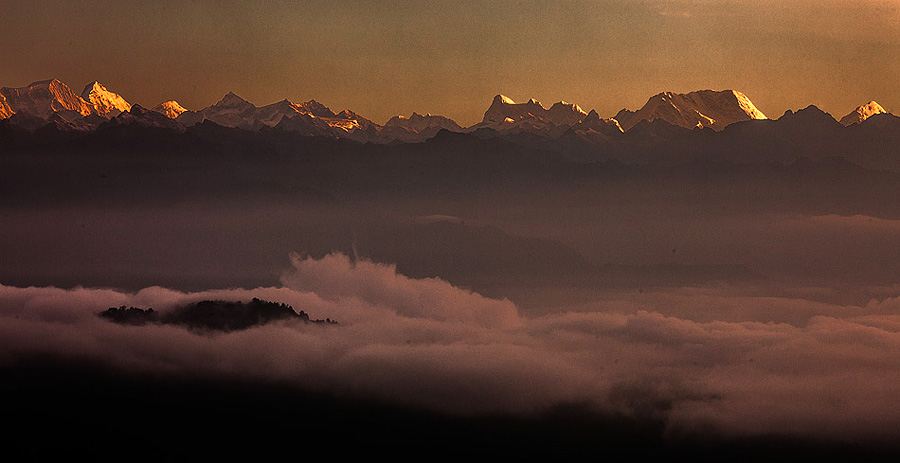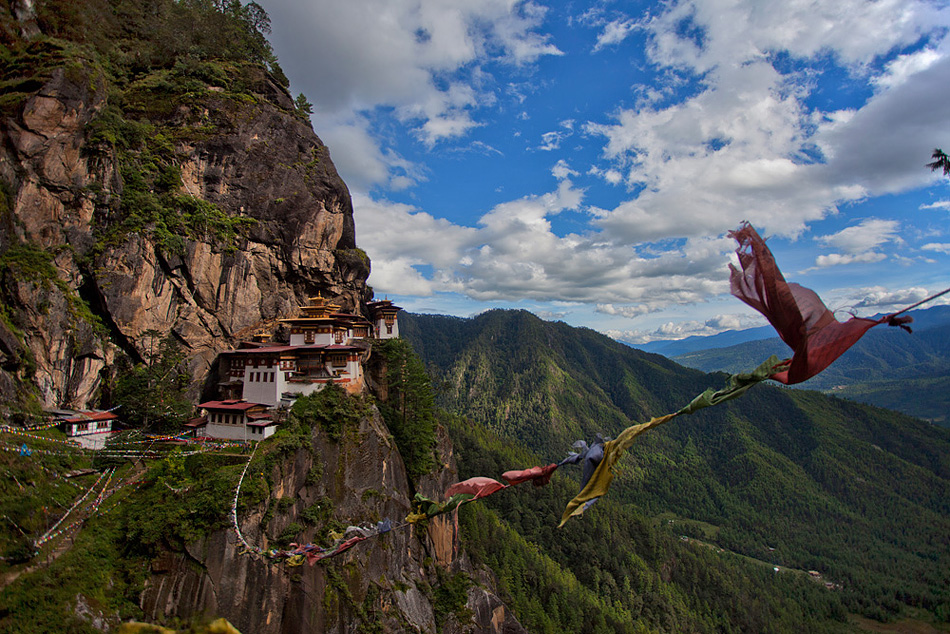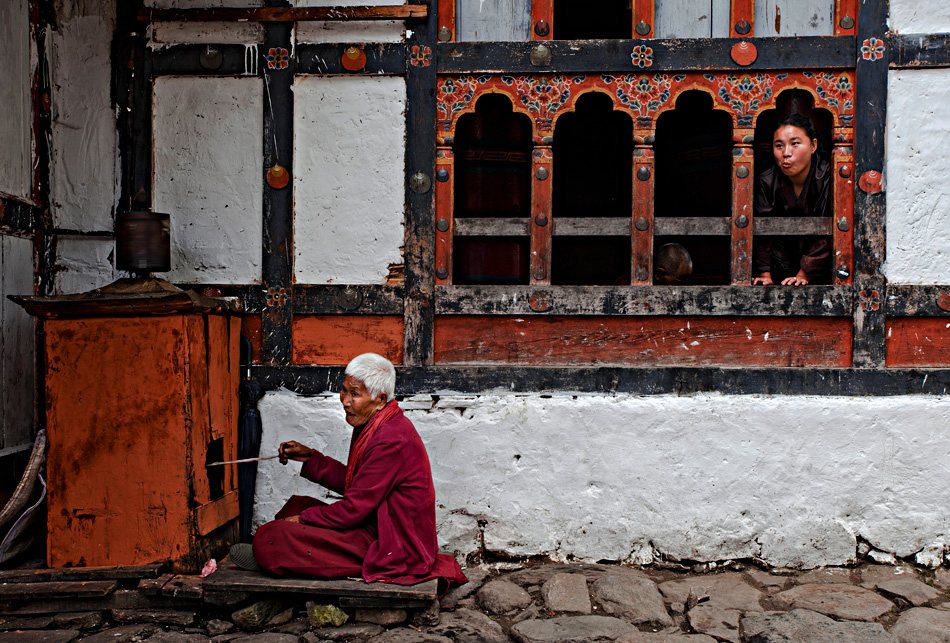If I have to think of brilliant view of a long line of Snow Peaks in the Himalayas, Dochula Pass in Bhutan quickly comes to mind.
Also see: my upcoming photography tour to Bhutan

Sunrise from Dochula Pass, Bhutan
At ten thousand feet, DochuLa is not really high by Himalayan standards. But it is a good enough altitude to get clean air and a clear view of high mountains that are as far away as a hundred kilometers. On the horizon towards north-east from DochuLa is a long line of white summits on exhibit. The peaks include the who’s who of Bhutan’s mountain landscapes, Gangkar Puensum topping the altitude graph among them all. At 7,570 meters, Gangkar Puensum is also the world’s highest unclimbed peak today, primarily because sanctity of the peak makes it off-limits to mountaineers.
Ever since I visited Bhutan for the first time in the summer of 2012, I have always looked forward to going back. I returned again in September ’12 and am looking forward to another visit in October 2013. There is a certain charm about Bhutan that makes me look forward to these trips. The country’s lush green Himalayan slopes, its high mountains, predominantly rural and agrarian population, a very laid back and careless nature of its people and an endearing Buddhist tradition and culture have filled my senses and have never failed to bring me peace from within. Here is a quick look at places and experiences that I look forward to, during my trips to Bhutan.
Hiking Paro Taktsang (Tiger’s Nest Monastery), Paro Valley
Let’s begin with the most well-known and most-visited place in Bhutan. Despite the effort of climbing, Paro Taktsang is visited by almost every person who makes it to Bhutan. The monastery is known for its magnificent setting, located half-way down a vertical cliff at an altitude of 10,000 feet. It is also one of the most sacred Buddhist sites of pilgrimage in the country. Legend has it that Guru Padmasambhava, wh0 brought Buddhism to Bhutan, flew here on the back of a tiger and meditated for many months. A temple was first built here in the 17th century, but the current building is as recent as 1998, rebuilt after a fire destroyed the older structure.

It takes a climb of three to four hours to reach the monastery through a thick coniferous forest on a well-defined path tread by tourists as well as many locals on a pilgrimage. Rhododendrons and pine trees keep your company all through the climb. Somewhere half-way up on the way is a restaurant run by Bhutan Tourism, which offers tea and snacks through the day and a buffet lunch during the afternoon hours. The strategically located restaurant also offers excellent views of the monastery. The steep climb, especially after a heavy lunch, can be very tiring. No wonder it’s a cliche among travel writers that it would be easier to fly there on a tiger.
A life dedicated to Buddha in Kyichu (Kichu) Lhakhang, Paro Valley
Kyichu (Kichu) Lhakhang is one of the oldest Buddhist Temples in the country and a place believed to have been visited to Guru Padmasambhava. An ancient cypress tree in the temple premise is known to have sprouted from the Guru’s walking stick.
An elderly woman turns a prayer wheel at Kyichu Lhakhang in Paro, Bhutan.
In Bhutan, it is a tradition to retire from everyday life after a certain age and spend rest of the life wearing a monk’s robe in a spiritual quest. A small group of elderly men and women usually congregate in Paro’s Kichu Lahkhang every day, spending their time turning the prayer wheels.
Kichu Lhakhang (lhakhang = temple in dzongkha) is one of the oldest living temples in Bhutan, and played an instrumental role in spreading Bhuddhism to Bhutan.



